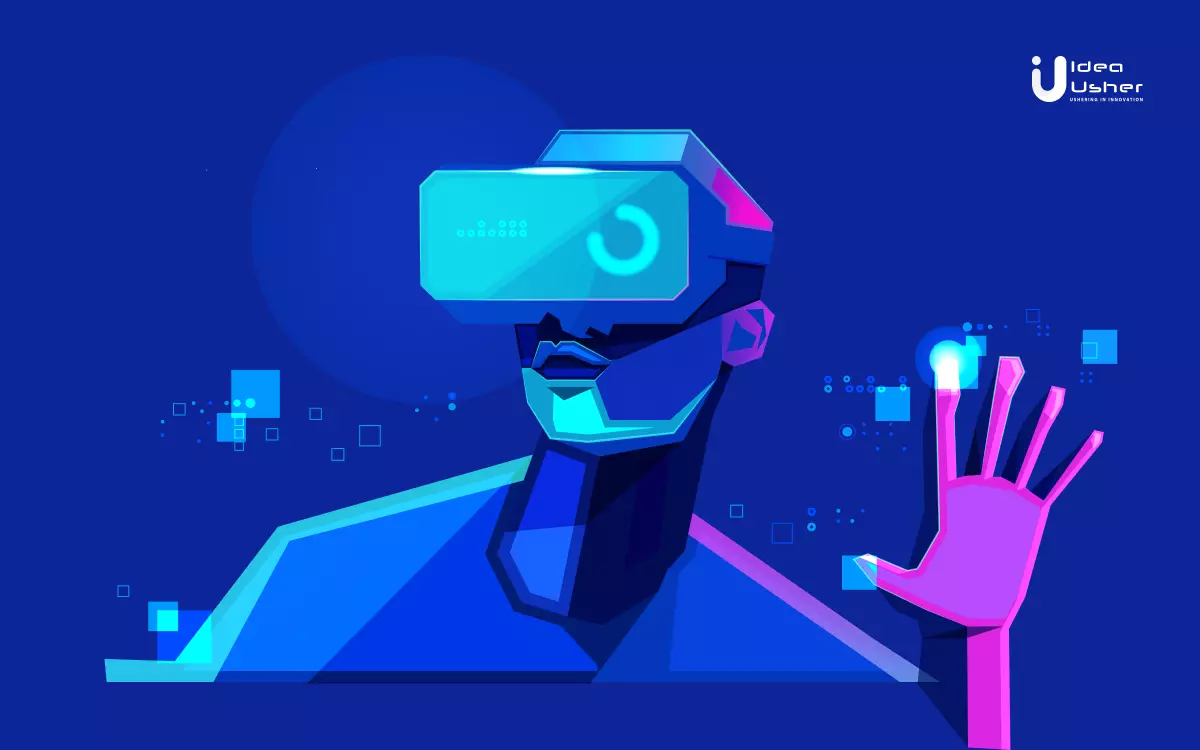Virtual Reality software development has been among the most popular topics on google search. It has opened new doors for the entertainment industry. Throughout history, we only knew one environment. That environment was the gift of mother nature to humans. But thanks to new technologies and VR development, we are on the verge of defining our environment digitally!
What is Virtual Reality Software?
VR is a gateway to the 3D world, and the computer becomes its gatekeeper. In this world, when the person is placed, he can see, hear, touch, and smell.
The concept of Virtual Reality becomes pretty clear from the above explanation. Let’s dive a bit deeper to know about VR software.
VR software brings together all the digital elements to show the immersive world to the user. This software enables the user to interact with the virtual world authentically. The software developers make these software solutions a success.
VR software has proved its worth in different sectors. It has not only benefited the gaming & entertainment industry. But, it has also shown mind-blowing results in the architecture, defense, and engineering sectors.
How does VR software work?
The experience of entering virtual reality (VR) with headphones is still inexperienced by many users. Just a headset won’t work for the working of this software. A laptop/smartphone and a motion-tracking device are necessary to facilitate smooth functioning.
Let’s have a look at these devices and how they conduct the following functions smoothly:
● Headset – It displays the content in front of the user’s eyes.
● HDMI/Cable – Helps to transfer the images from the PC to the screen.
For the user interaction, there are several options available:
● Head Tracking – It follows the head movements of the user. It assigns directions and activities with the help of tools like an accelerometer, LED’s, and gyroscope.
● Eye Tracking – This option is available in a few headsets. It helps to track the direction of the eyes and get a more realistic view of the visual.
● Motion Tracking – Motion tracking gives a new level to the user. With the help of motion tracking, the user would not just look around but also walk around. That is what creates an actual virtual reality!
The combination of optical and non-optical tracking makes the working of VR successful. Read the blog further to get a more detailed view of VR software development.
A Skilled Developer For Every Project
Trusted by 100+ clients
Is sharing a virtual world possible?
Sharing a virtual world is possible through Metaverse. Now, the readers would be curious to know what Metaverse means. It is a combination of VR, AR, and blockchain technology. Personal avatars will identify the users. They will share the virtual world from different locations.
Although Facebook introduced it, Google, Apple, and Snapchat are all becoming its players. It opens the doors to trade, business, music concerts, and whatnot.
Which software is used for Virtual Reality?
Developing a VR app can be challenging, although it has excellent benefits for a business. Here is the list of the five best Virtual Reality software development tools.
1. Unity
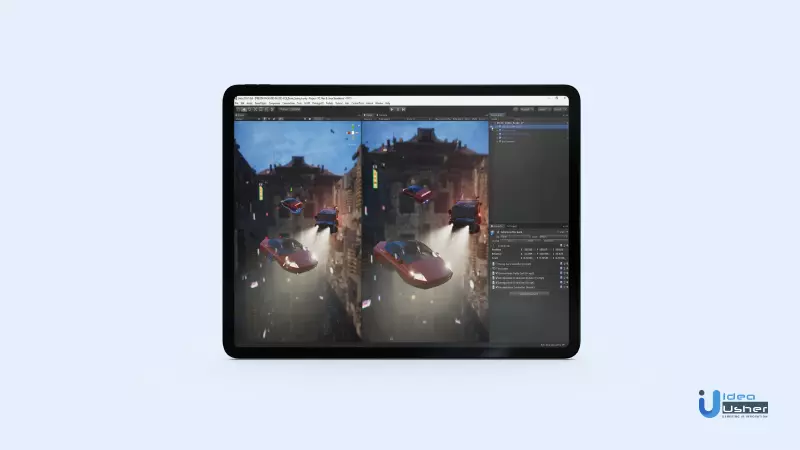
One of the apps that shows the path to creating an impact in the VR world is Unity. It comes among the most reliable due to its technology for creative potential. A team of experts collaborates to create your VR software a reality.
You can incorporate interactivity with the XR (Extended Reality) interaction toolkit it offers. It can provide quality results in performance media with a wide range of particle systems in it. With its support, creating a more profound presence in the virtual environment is possible for developers. Moreover, their integrated ambisonic audio and stereo instancing provide an overall enhancement in your VR software.
2. Amazon Sumerian
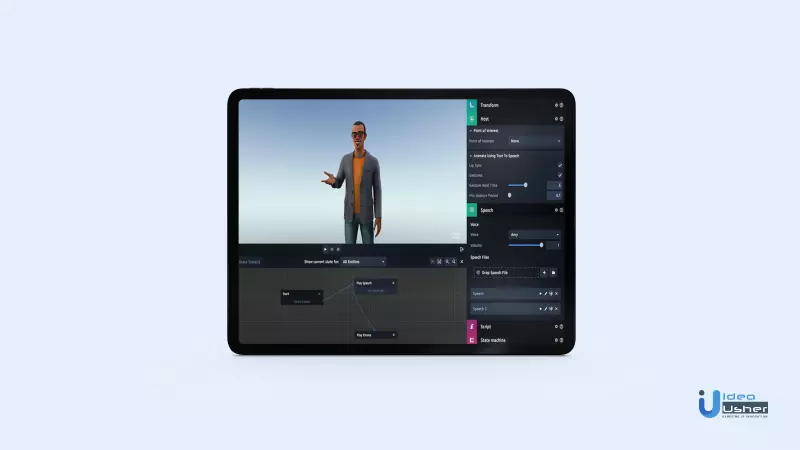
One of the leading tech giants globally, Amazon is not behind in any field. Their interest in the Virtual Reality domain is visible through the Amazon Sumerian. It is a web-based set of tools that helps create VR and AR software. The Sumerian offers an advanced 3D engine coming with a state-of-the-art library too.
Developers can use it for advanced Java scripting. Along with scripting, it also focuses on efficient animation. The built-in state machine is a highly responsive feature for the same.
3. Google VR for everyone

The use of VR software is to immerse the user into the activity. Therefore, creating immersive VR experiences is achievable with Google VR. As the biggest tech company, Google has set foot in the VR field with clear objectives. Google VR is for everyone who wants to develop software incorporating this innovative technical aid.
Google VR extends its reach into the navigation and entertainment fields. They offer Earth VR, a tool that can bring the globe to your reach. Moreover, Google VR is making VR fun and simple technology to afford with its product named Cardboard.
4. Unreal Engine 4
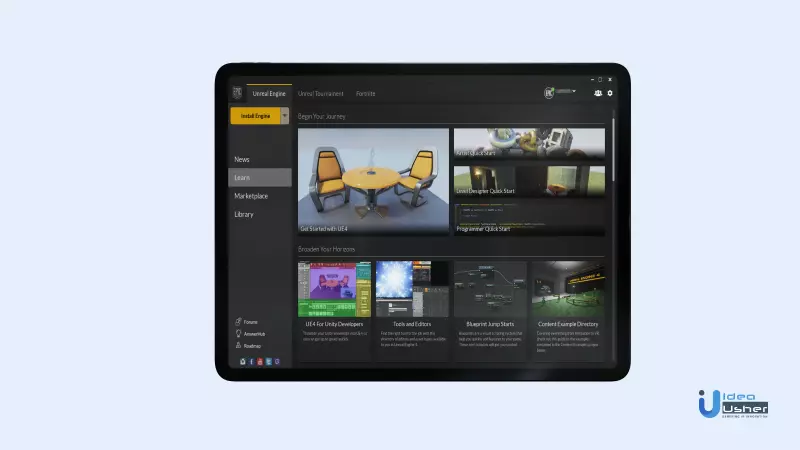
When it comes to the most open 3D creation tool, there may not be any other software better than Unreal Engine 4. It is a VR software that aims to create magnificent photoreal visuals. With its assistance, developers can create more immersive experiences.
Real-time 3D experiences are one of the features that are in demand in the gaming world. Unreal Engine 4 can offer a platform for innovating the gaming industry with VR. Learning to use this software for VR development can also be convenient. They aid the user from its extensive webinars and instructor-led training.
5. CRYENGINE

CRYENGINE is a sandbox editor software that boasts an exceptional VR experience. It primarily aims to advance the gaming business. With this software, gaming developers can create visual characters that are splendid. Being a sandbox editor, it offers a suite of VR tools.
CRYENGINE gives the developer the power to incorporate virtual reality into stunning animation and realistic control. It also assures an upliftment in visuals, audio, AI and animation, physics, etc. The additional features include Audio Control Editor, HRTF audio specialization, character technology,3D HDR lens flares, etc. With such an asset in hand, developing VR gaming software is hassle-free.
Basic steps of VR Software Development
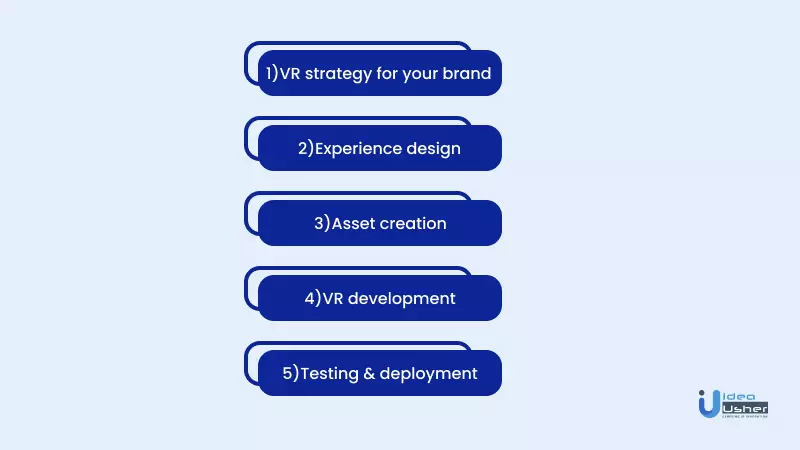
1. VR strategy for your brand
The potential use of virtual reality in software development is immense. The first step in developing VR software is creating a VR strategy. As a brand owner, you can use VR in various ways to make strategic moves that help in brand awareness too.
Research
Researching about the VR’s functionality beforehand is substantial. The initial approach in your strategy lays the foundation for the next steps. A research strategy involves digging deep into the choices of the customers. For VR development to prosper, you must understand the customer’s needs. Moreover, their interest in VR software should also be under your scrutiny.
2. Experience design
Designing the experience in your VR software is foundational. Hence, the next step discusses creating an ideal experience interface. When it comes to the experience design, firstly, it should be known as what sort of design is suitable for the software. Then taking care of the essentials should be done.
Visual design
Once the approval of the relevant features is official, this step commences. The developer needs to apply the guidelines for wire-frames and visual graphics. They should be according to the brand recommendations.
Text readability
While developing the VR software, the text readability should be kept high. It reduces the visual fatigue of your customers.
Ergonomics
The interface of your VR software must abide by the ergonomics. The developer should take the necessary steps to ensure the proper motion viewing angles and zones.
Canvas size
Canvas size needs to be optimized for a better mobile app workflow.
3. Asset creation
Certain assets make the VR software a go-to one. Hence, creating VR assets is the next step in the process. It involves a few stages, and they are namely:
Concept development
For an immersive experience, the user must connect with the software. A storyboard or concept helps in doing so. It is usually a prime stage in VR gaming software.
3D modeling
It is different from drawing. It is a stage that involves structuring the visual elements into a 3D interface. We can say that an object is made into a 3D mesh during this stage.
Texturing and animation
Texturing is nothing but giving a final brushing to the 3D models. At the same time, the animation is bringing them to immersive motion in your VR software.
Camera techniques and angles
Devoid of a lens, unlike a real camera, this stage aims to give focus, aperture, and views mainly in 3D. The developers set the ideal depth, focal length, viewing angles, etc.
4. VR development
This step focuses on bringing the VR software to its feet. The development combines all the previous actions. Therefore, it becomes the focus area in any VR development process. It includes the development of a prototype before the final testing of the software.
Moreover, the VR development process may involve further steps after a prototype is satisfactory to the developers. This process also involves creating simulation processes that are to be tested further. You can also hire VR developer for the same.
5. Testing & deployment
Once the VR software development finishes, the last step remaining is testing and deployment. It is essential to test the VR software to get further improvements. The testing process can involve simulation exercises and prototype testing.
The VR software developers may test the final product or the prototype. Over the development procedure, it may occur several times. It helps in fixing any bugs or verification errors. After the testing, deployment takes place. It is nothing but the final delivery of the VR software. However, it includes setting up device management. The installing of the VR software into hardware also comes under it.
6. Indirect Sales Promotion
It helps increase the popularity of your VR software. It includes creating information noise and advertising methods. You can make the customers aware of the VR software by indirectly promoting it through various multimedia sources. Those sources can also use VR in them for better conveyance.
Uses of VR software
The software has shown drastic benefits in many sectors. Education, fashion, mental health, medicine, sports, entertainment, etc., have all availed the software’s advantages. Let us know how VR is advantageous in these areas.
1. Testing of a product
Businesses do the easy and final testing of a product. This step is the most crucial one, and if done correctly, it can derive good results. The product testing can be easier and faster when the person enters the reality of using that product.
2. Expansion of education
Education becomes more meaningful when followed by practical exposure. VR aims to provide practical exposure to the students. By diving into a completely immersive environment that mimics textbook scenarios.
3. 3D modeling
Having a realistic vision of the ongoing project has become the demand of the present era. This demand can be met by using VR software in 3D modeling. By having a 3D model in VR, the companies can look for the detailing aspects. Hence, they can improve their product efficiently.
Closing thoughts from Idea Usher
Being a frontrunner in app development services, Idea Usher endeavors VR development and solutions to benefit multiple sectors. When we join forces with a startup or entrepreneur, our team closely considers the budget and delivers the best possible solutions that serve the greater community. With our experts, you can fine-tune your project purpose with a virtual reality software development that augments user experience in learning, gaming, entertainment, and more.
Get in touch with our experts today!
Work with Ex-MAANG developers to build next-gen apps schedule your consultation now
FAQ’s
Q. How much does it cost to develop VR software?
A. The cost generally ranges from $25,000 to $75,000. It depends on what you create, whether a gaming VR app or a non gaming VR app.
Q. Is VR a technology?
A. Virtual Reality is the use of computer technology to create an environment. The users don’t use a screen. Instead, they are immersed in that environment.
Q. What is the difference between VR and AR?
A. AR uses a natural world setting; on the other hand, VR is ultimately a virtual experience. AR can be accessed on smartphones, whereas VR requires a headset.
